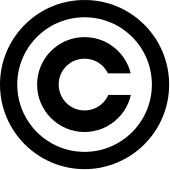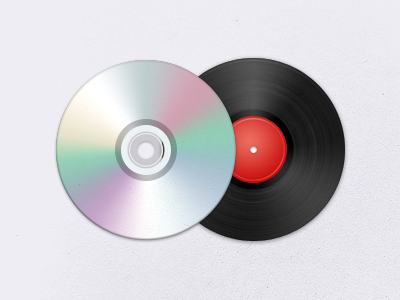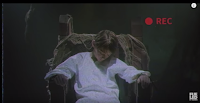The Music Industry:
The music industry is made up of a mixture of both independent and mainstream record labels, whom make their money by creating new songs and promoting their artists. This will eventually result in huge revenue as multiple artists sign onto the label, release new albums, and sell out when they go on tour.
The industry is made up of a variety of vital roles, such as the
songwriters and
composers who
create the music, the
musicians and
singers who
perform the music, the
companies who
sell recorded music (such as the retail and online music stores), and finally the people that help put together
live performances (booking agents, music venues, etc.).
Both independent and mainstream companies can benefit from this process and earn a large profit, however both to different extents. For example the 'Big 3' are an oligopoly of mainstream companies that saturate the market by around 80%. The Big 3 include: Universal Music Group, Sony BMG, and Warner Music Group. They also own many independent companies too, for example smaller record labels such as Atlantic Records are a subsidiary of Warner Music Group.

Because of this, the Big 3 are more successful than smaller, independent record labels. They have the big artists, even if they are signed to a subsidiary of their company, they can still advertise the artist and gain money from their success. These big artists end up becoming viral on platforms such as YouTube when they release singles and music videos; and when it comes to them going on tour, they'll have a big enough fan base in which they sell out their shows. This is a huge success for the record label as touring a vital pathway to gain a profit, especially today with the popularity of streaming growing rapidly.
 |
| From Ed Sheeran's official website: most of his shows are now sold out, and at the time that the tickets went on sale, big venues such as Wembley Stadium sold out within minutes. Record Label- Atlantic Records, subsidiary of Warner Music Group |
As for independent companies, they have a lot of competition if they are not a subsidiary of a mainstream music group; as their artist's music could get 'lost' under all the promotion and hype around a more popular artist. An example of a completely independent record company is Hopeless Records, whom are the label for artists such Neckdeep and All Time Low. These are there more well known artists, however they used to work with artists such as Divided by Friday, who are now disbanded, which could suggest they weren't that successful in the music industry. These independent companies don't gain as much profit due to this competition, as their shows sell out a lot slower or don't sell out at all, and they also may do smaller gigs due to having a small fan base. For example, recently All Time Low revisited the town of Kingston, in which they performed a short acoustic set in a theatre with a small capacity of around 900 people, as the fan base there isn't huge. However, All Time Low is still a successful band that have been around since 2003, so this suggests that there are ways in which artists signed onto independent companies can acquire fame and gain some profit for a long period of time. One way in which they have done this can be due to technological advances and online platforms such as YouTube and Spotify.
Effects of Technological Advances:
The music industry is one that is growing fast; and has already developed a lot in the past few decades due to many factors, such as technological advance. Physical copies of albums and songs used to be very popular, from when they were cassettes to be played in a Walkman to CDs being played in a car radio or other device. This changed when technology such as the iPod was released in 2001, and from there kept developing. Songs were still being bought, however downloaded onto these devices rather than being bought as CDs. It's the recent technological advance that has affected the music industry, and this advance is the introduction of streaming. Spotify is an example streaming site founded in 2006 and its application launching in 2008, and offers its service to both members who pay a monthly subscription and those who aren't members, as they can listen to music for free, just with features such as advertisements playing every few songs. Today, Spotify has 140 million users, 60 million of which are members, and in 2015 their revenue increased to $2.18 billion, making them a huge success. Other streaming sites include YouTube and Apple music, and others featured below:

These streaming sites benefit independent companies and artists, as they are able to freely put their music online and gain popularity from views, and maybe eventually getting recognised by record labels that they can sign onto. It's completely free to upload a song to YouTube, which was launched in 2005, so this means that there are a growing number of aspiring singers posting their videos to YouTube alongside famous singers that are signed onto a record label. Referring back to All Time Low, because they're signed onto an independent company it was said that it would be hard to compete in the music industry with the Big 3. However by posting their music videos on YouTube and putting their music on other streaming sites such as Spotify, they have found an easier way to promote their music to gain profit through accumulating a secure fan base.
Another example of someone who has become more successful on these platforms is a YouTuber known as Ally Hills. She posts music videos and singles on both YouTube and now she is verified on Spotify, meaning that she is growing in both popularity and success just from these online platforms.
This can also benefit mainstream companies, as streaming sites will want big artists to have their music featured, meaning they are willing to pay these companies for that. Example artists include Ed Sheeran or even Taylor Swift, who recently put her music onto the streaming site of Spotify. This way, a share of what the streaming members pay to the company is given to the record label, the artist and people who support this artist. However, this share is very small due to there only being 60 million members out of 140 million users on Spotify, so it could also be suggested that putting music on streaming sites is not worth it. This leads onto the disadvantages that these streaming sites have on mainstream companies Due to there being more people on the site that would rather listen to the music for free with ads than pay the monthly subscription fee, the record labels that agree to have their artist's music featured on the site only earn a very small share depending on how much there song is played. This can also affect independent companies, especially as they have a lot of competition with the mainstream companies, who can have there songs on a featured page or playlist on Spotify to help promote their music.
Because Spotify offer this free service, more people are drawn in by this feature, and would rather use these sites than buy a copy in store or on apps such as iTunes. This results in less sales of physical copies such as CDs, and companies begin to lose profit as people are just listening to their songs for free due to it being readily available. To overcome this, some artists have withdrawn their music from certain streaming sites that offer smaller shares; for example Beyonce has put her album 'Lemonade' on only a few streaming sites such as Tidal, and not Spotify. Other artists in the past have also done this however eventually put their music on Spotify, such as Taylor Swift and Kanye West, and this has caused Spotify to get concerned about what this could mean for them in the future.
So this technological advance has both positive and negative effects on record labels, but also to different extents depending on whether they're independent or mainstream companies.
Copyright and Censoring:
In the music industry, artist's songs are played on a variety of platforms in a variety of different situations. Because of this, in situations with certain circumstances, for example a young child may be present, censorship is needed for the protection of both the artist and audience, and for moral and political reasons. In order to have their songs featured on platforms such as radio and TV, there are certain guidelines that these broadcasters point out to the record before they can play the song to the public. Examples may include that the song shall not include offensive language or make reference to another text that is already copyrighted.
There are many reasons as to why a song may be censored, with the first being that it includes derogatory terms and/or sexual references, which is not suitable for young children to hear, and also people may just prefer not to hear it when listening to music. The songs are edited as a result of this, producing either a 'clean version' or a 'radio edit', or alternatively, these stations may feature these songs at a specific time, for example in the evening, to avoid presentation to a younger demographic.
Editing techniques used to censor this includes distorting the vocals by bleeping them or backmasking (in which the lyric is recorded backwards onto the track so it's hard to decipher it), or even to replace then with alternative lyrics. As well as lyrics, sound effects can also be censored out, for example gunfire that connotes violence.
Another reason as to why music may be censored is due to sensitivity, for example a sensitive time may be after a specific event (such as a disaster) in which a certain song would be too inappropriate to play.
Finally, another reason as to why songs maybe censored is due to legal issues, for example copyright cases, such as sampling, in which involves reusing existing samples from song for other uses. An example of sampling is Fall Out Boy's song Uma Thurman, in which they sample the song Munsters a few times throughout the song.
Furthermore, it's not just the lyrics that have to be censored, for example if shows such as MTV want to feature artist's music videos, there are further guidelines that have to be met before the video can be premiered. However, MTV censorship has come under a lot of criticism and a lot of debates, for example they have had to remove or change shows due to a number of complaints. In terms of music videos, complaints have resulted in censorship and the videos are sometimes even banned from the channel. References that have had to be removed from lyrics include: drugs, sex/nudity, violence/weapons, homophobia, suicide, racial slurs, advertising and derogatory terms.

Music videos may also me moved to late-night/obscure rotation, much like songs on the radio. The reasons in which this might occur is due to sexual content; for example revealing clothing,and misogyny (e.g one of The Progidy's songs was given late night rotation before being removed altogether due to a decision made by the feminist group National Organisation for Women.
Music videos can also be banned from MTV altogether, depending on location, as even the censored form of the video was too controversial to premiere. In the UK, one music video (My Favourite Game by The Cardigans) was filmed with five different endings, which were all banned from MTV due to fears of encouragement of causing car accidents.

The Music Law refers to the legal aspects of the music industry, and covers a range of subjects from the copyright law (part of intellectual property law and competition law. Copyright is the legal right in which the creator of an original work piece is granted exclusive rights for its use and distribution for a limited time.
In order for the work to be eligible for copyright it must meet the standards of originality, and different countries conduct different tests for this. However the standards are generally quite low, for example in the UK there must be some skill or labour that has gone into the work.
The typical copyright notice is the letter c inside a circle,
©, but more recently for sound recordings of music the copyright symbol can be a p inside a circle,
℗.
In terms of music, copyright protection is present from creation (once lyrics are recorded or set to paper) according to the US Copyright office. However, in order to sue and claim damages the creator should enforce their rights at this office. Various rights that copyright gives the artist includes the right to reproduce the work, adapt, perform and distribute it. This protection lasts for 70 years after the life of the artist if their music was produced after Jan 1st in 1978. Other facts about music copyright include that unpublished works are also eligible for protection, and a sound recordings are generally copyrighted separately from the musical composition due to not being considered the same work under the copyright law.
Convergence and Synergy:

Synergy involves the interaction of two or more organisations to produce a combined product or effect. This products promote each other in which the audience want to consume both of them. In terms of the music industry, an artist has collective image, in which the consumers will associate with them, such as their CD, merchandise and tour, So by listening to their songs, the audience may want to go to their concert for that album.
Convergence is where the company such as the record label will promote a product across different media platforms to obtain a bigger profit. An example in the music industry is how music can be streamed on YouTube and Spotify, played on MTV, downloaded or even sold as a CD or Vinyl.
An example record label is Sony Music, whom is part of the Big 3. They also have a branch for technology, such as the Walkman, TV even Sony phones, in which music can be listened to on both. This is cross media convergence as their music can be played on different devices, but also synergy as the items promote the overall company and its products. Sony also have a film company called Sony pictures, meaning that synergy can occur here as music products can be a soundtrack for a certain film, so the music promotes the film and in turn the film will promote the artist; and this is made a lot easier when they both come under the same company.
This has changed the music industry, in which it benefits big conglomerates as they can use different platforms to promote multiple products easily, saving and gaining more money. However this may by harder for independent companies as they may not have the money or publicity to promote music on other platforms, and record labels may not also be under the same company as one in the film industry.

 The theory revolves around the idea that women are stripped of their human identity and are rather seen as objects of desire, and this can be done via many methods of camera work.These include panning across a women's body, cutaways and even zooming or close ups that can be seen as appealing to a male audience. As for the female audience, they get the secondary perspective and often find themselves consuming media texts from this male view. To support this theory, only 16% of media creators are female, which indicates that it is these male creators that saturate the industry with texts that contribute to the male gaze.
The theory revolves around the idea that women are stripped of their human identity and are rather seen as objects of desire, and this can be done via many methods of camera work.These include panning across a women's body, cutaways and even zooming or close ups that can be seen as appealing to a male audience. As for the female audience, they get the secondary perspective and often find themselves consuming media texts from this male view. To support this theory, only 16% of media creators are female, which indicates that it is these male creators that saturate the industry with texts that contribute to the male gaze.










